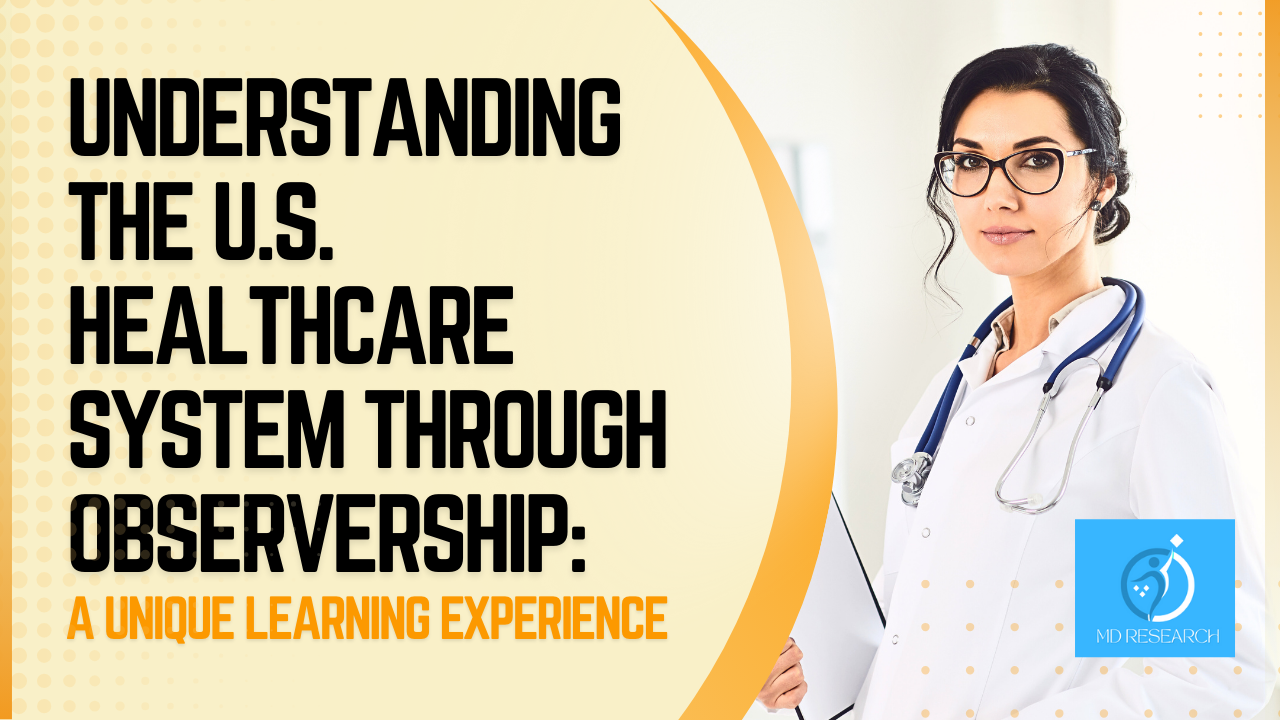
The U.S. healthcare system is often seen as a maze of hospitals, insurance plans, and medical jargon. For healthcare professionals from other countries, understanding this system can be incredibly challenging. That’s where observership programs come in. These programs give international medical professionals a chance to spend time in American hospitals and clinics, learning about the U.S. healthcare system up close. Let’s explore how these observerships work and what participants can learn from them.
What is an Observership?
An observership is like an internship for international doctors and medical students. They don’t directly treat patients but observe and learn from experienced U.S. healthcare professionals. This experience helps them understand the ins and outs of American healthcare.
How Does the U.S. Healthcare System Work?
The U.S. healthcare system is a mix of public and private services. There are government programs like Medicare and Medicaid that help specific groups of people, such as the elderly and low-income individuals. Most people, however, get their health insurance through private companies, often provided by their employers. Hospitals can be non-profit, for-profit, or run by the government, adding to the complexity.
What Can Observers Learn?
- Advanced Technology and Specialization:
Observers see some of the most advanced medical technology in the world. From state-of-the-art MRI machines to robotic surgery, the U.S. healthcare system is at the cutting edge of medical innovation.
- Patient-Centered Care:
In the U.S., there’s a strong focus on patient-centered care. This means doctors and nurses work hard to involve patients in their own healthcare decisions, ensuring they understand their treatment options and what’s happening with their health.
- Team-Based Approach:
Observers will notice how healthcare in the U.S. is often delivered by teams. These teams include doctors, nurses, pharmacists, and other specialists who work together to provide the best possible care for patients.
- Electronic Health Records:
The use of electronic health records (EHRs) is widespread. These digital records help keep track of a patient’s medical history, medications, and treatments, making it easier for healthcare providers to coordinate care and avoid mistakes.
Challenges in the U.S. Healthcare System
Despite its strengths, the U.S. healthcare system has its problems. Observers often notice:
– High Costs:
Healthcare in the U.S. is expensive. Patients can face high bills, even with insurance.
– Complexity:
The system is complicated, with many different insurance plans and coverage options.
– Inequality:
There are significant disparities in healthcare access and outcomes. People from lower-income backgrounds, certain racial and ethnic groups, and rural areas often receive lower quality care.
Why Observership Programs Matter
For international medical professionals, observerships provide a unique opportunity to compare and contrast the U.S. healthcare system with their own. They can bring back new ideas and practices to improve healthcare in their home countries. Additionally, these programs foster a global exchange of knowledge, helping to improve healthcare
Understanding the U.S. healthcare system through an observership program is an eye-opening experience. It offers a chance to see advanced technology, patient-centered care, and team-based medical practices in action. While the system has its challenges, the lessons learned from these programs can inspire improvements in healthcare globally. Observerships are more than just learning opportunities—they’re a way to connect healthcare professionals across the world and share ideas that can lead to better patient care everywhere.
